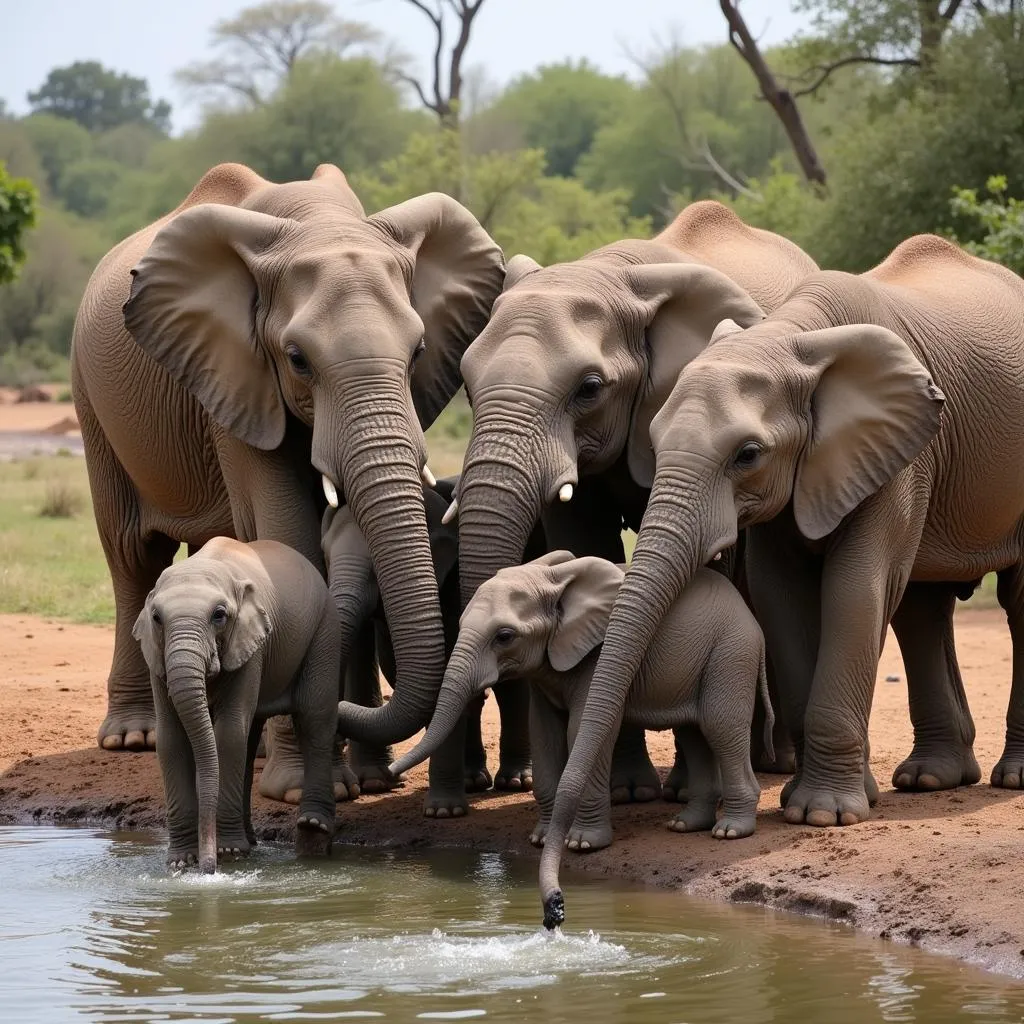African Elephant Physical Description: A Giant’s Guide
The African elephant, the largest land mammal on Earth, is a creature of immense size and power. Its physical characteristics are a testament to its evolutionary success in the diverse landscapes of Africa. This detailed guide delves into the magnificent physical attributes of the African elephant, unveiling the secrets behind its impressive stature and unique features.
Size and Weight: How Big is an African Elephant?
An adult African elephant’s size can be truly awe-inspiring. Males, called bulls, stand up to 3.3 meters (11 feet) tall at the shoulder and can weigh up to 6,000 kilograms (13,200 pounds). Females, or cows, are slightly smaller, reaching heights of up to 2.7 meters (9 feet) and weighing up to 3,000 kilograms (6,600 pounds).
 African elephant size comparison to a human
African elephant size comparison to a human
To put this into perspective, an adult African elephant can be as heavy as three cars combined! This massive size grants them a powerful presence in their environment and allows them to access food sources that are out of reach for other herbivores.
Distinctive Features: What Makes an African Elephant Unique?
The African elephant boasts a suite of distinctive features that make it easily recognizable. These include:
- Tusks: Perhaps the most iconic feature, both male and female African elephants possess tusks, which are elongated incisor teeth. These ivory tusks can grow throughout their lives, with some reaching over 3 meters (10 feet) in length.
 Close-up view of an African elephant tusk
Close-up view of an African elephant tusk
Elephants use their tusks for a variety of tasks, including digging for water, stripping bark from trees, and defending themselves.
-
Trunk: The trunk, a fusion of the nose and upper lip, is another remarkable adaptation. This highly versatile appendage is comprised of over 40,000 muscles, granting it incredible dexterity.
-
Ears: The large, fan-shaped ears of the African elephant are not just for show. They play a crucial role in thermoregulation, helping to dissipate heat and keep the elephant cool in the African sun.
-
Skin: The thick, wrinkled skin of the African elephant provides protection from the elements and parasites. While it may appear tough, their skin is surprisingly sensitive and requires regular mud baths to stay healthy.
Adaptations for Survival: How Physical Traits Aid African Elephants
Each physical characteristic of the African elephant, from its massive size to its intricate trunk, has played a crucial role in its survival. Their size deters predators, their tusks assist in foraging and defense, their trunks allow for precise object manipulation and communication, and their large ears help regulate body temperature.
 African elephant family drinking water using their trunks
African elephant family drinking water using their trunks
Conclusion: The Majesty of the African Elephant
The African elephant’s physical description is a testament to the power of natural selection. Every feature, from its colossal size to its versatile trunk, speaks to its evolutionary success in the challenging environments of Africa. By understanding their physical attributes, we gain a deeper appreciation for these magnificent creatures and the importance of ensuring their continued survival.


